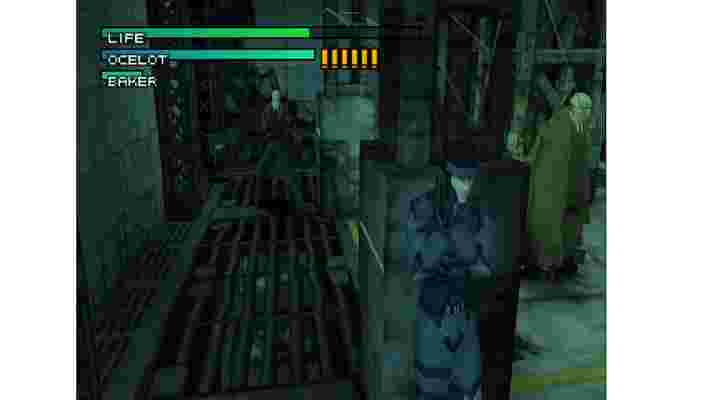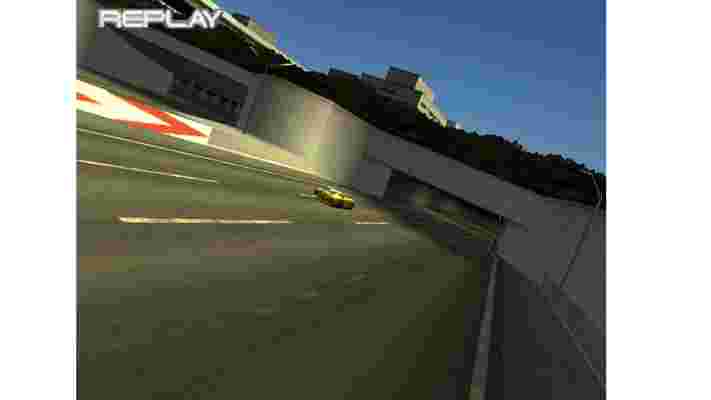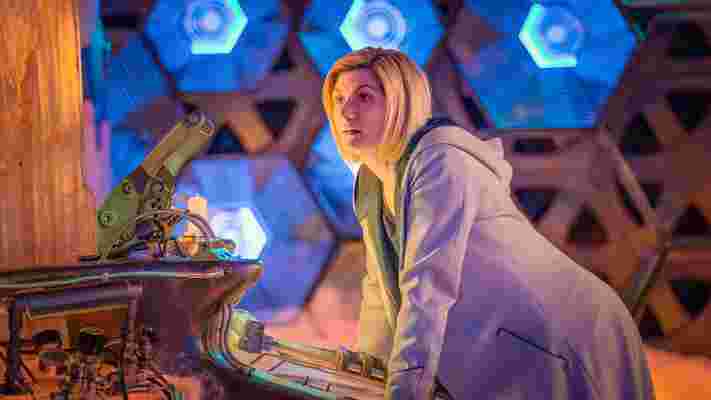Backward compatibility in games has been something I've been a proponent of since the PlayStation 2 introduced the feature in 2000. You could load up almost any PlayStation 1 game, and play it as normal.
But as times changed and technology became more refined, playing back-catalogs of titles on Sony's platforms increasingly felt more of an afterthought.
This is why the new PS Plus service fills me with hope, with just a hint of trepidation. The idea of being able to play Metal Gear Solid, Tomb Raider, Gex, and more on a PS5 has tempted me to finally consider grabbing the console.
But Sony is already making it difficult for users like me with the new tiers that it's offering, and it makes me wonder if Sony should already look to simplify the new service before its launch in June.
Call 140.85

When I first saw the rumors of Project Spartacus, I was excited. Microsoft has had a fantastic backward-compatibility program for Xbox, and while Nintendo got off to a shaky start with its Switch Online service, playing F-Zero X online is worth its price alone for me.
But Sony has always been bizarrely hesitant to offer its back catalog to new users. Back when the PlayStation 3 was released in 2007, you could pop in a PS1 or PS2 disk, and play as normal. But later models would regress this to just PS1 games, and while some other PS2 games would be available in the store, they would be very few and far between.
As it stood with PS4 and PS5, your only hope was to ask developers for remasters to arrive, as there was no chance of seeing re-releases of PS1 and PS2 games for the systems.

Many gamers in the 90s, myself included, grew up on a PlayStation, and many in my age group have kids who they're trying to introduce to retro classics in between Fortnite matches on the Nintendo Switch .
Yet, many have been unable to share some of their favorite games from their own childhood because of Sony's approach to its PS1 and PS2-era titles. Its CEO, Jim Ryan, continually dismissed the games because they're old, an opinion that has felt like a big misstep the whole time.
I would chat to friends, both offline and on Twitter, about how we'd love to play certain games like Wipeout 2097 again on a PS5, hoping Sony might one day reconsider its stance.
But there finally looks to be a change of heart, perhaps in response to what Microsoft and Nintendo have done in this area of nostalgia.
Just one tier for retro gaming

However, Sony is in danger of already confusing its users before the service has gone live. There's three tiers, with the highest, called PlayStation Plus Premium, priced at $17.99 / £13.49, with Australian pricing yet to be confirmed. This is the only tier that will let you play Sony's games from the PS1 and PS2 eras.
To pay a monthly price, or a higher one if you choose to pay yearly, for access to Sony's back catalog in just one tier, says to me that the company still has a way to go before it recognizes how important retro gaming is.
There's also the question of the classic games that previous PS3 owners, myself included, had bought back in the day. From Ape Escape to Ridge Racer, if they're not able to be converted into free downloadable purchases from looking at our previous purchase history, Sony could have another job on its hands to justify its actions.
Finally, there's been no list as yet as to what games will be included in this plan. Its blog post spoke of 340 additional games to this tier, but while I hope this includes rare classics like Evil Zone, Rosco McQueen, B-movie, and Star Wars: Jedi Power Battles, there's a chance it could be filled up with much more forgettable games from the past.
So am I happy with the announcement? Almost. It's a silent acknowledgment from Sony that this should have been on its consoles as far back as the PlayStation 4. It's great that there are almost 400 classic games getting their chance in the spotlight again.
But I'm also feeling much trepidation from it.
Playing F-Zero with friends online through the Switch has me hoping that we'll get something similar for this service as well. But with only one tier that allows you to play these games, it looks greedy from Sony's point of view, and the method of playing games from past eras has changed now. We want a mix of the old games, but with today's features, much like what Xbox and Nintendo Switch offer.
Sony has a lot to prove here. It has to prove that it's committed to preserving a catalog that defined the PlayStation to start with. It has to prove that it's listening to its userbase, and it definitely has to prove that this isn't a one-time service. Once the PlayStation 6 arrives, we should see this service continue to be offered regardless, and not as an afterthought.
But right now, as it stands, I'm happy that something is being done at least, and I'm sure once the list of 400 games comes out, I'll be checking stores for available PS5 stock whenever I can.
Hugh Grant rules himself out as next Doctor Who as show plans 'Marvel-style makeover'
Hugh Grant has ruled himself out of the running to become the next Doctor Who, after reports linked him to taking the key role in the long-running sci-fi franchise.
According to the Daily Mirror , the star, whose films include Paddington 2, Four Weddings and a Funeral and Love, Actually, had been targeted by the BBC to take over the role from Jodie Whittaker, who will step down later this year.
But Grant took to Twitter last night (March 21) to deny the reports and has ruled himself out the running to take over from Whittaker.
Grant's potential casting had been mentioned along with reports that producers (and specifically showrunner Russell T Davies, who will be returning to take over the sci-fi megahit in 2023) are planning big changes, were pushing for a "Marvel-style makeover" for the show.
What does The Daily Mirror's source say?
The source, who was simply billed as a "TV Insider", had waxed lyrical about Grant, saying that he would "bring a fresh feel” to the role, and also added of the Paddington 2 star: "He offers many attributes – great actor, British, award-winning, Hollywood A-lister and excellent at comedy. Conversations are in progress."
That last part clearly wasn't true.
They went on to say that the BBC's ambitions for the show have been scaled up and is even targeting the Marvel Cinematic Universe .
The source added: "The vision is that the show can be a Marvel-like product, building franchises around the Doctor and other key characters in his many lives. With the utmost respect to the BBC, in the past attempts like Torchwood were made on a very limited budget in locations around Wales. Now the world is Russell’s oyster.”
The comment on the show's budget comes as it has been revealed that Sony Pictures TV division has acquired a majority stake in Wolf Studios, which makes the show for the BBC.

When is Jodie Whittaker stepping down?
Whittaker and showrunner Chris Chibnall will leave their roles at the end of 2022, having filmed two more episodes in their respective roles, one of which is feature-length.
Whittaker took over the role from Peter Capaldi in 2017 and became the first woman to become the Doctor . She filmed three series in the role and will depart with a total of 31 episodes to her name.
Broadchurch creator Chibnall took the show's reins from long-time showrunner Steven Moffat in 2016 after previously working on spin-off series Torchwood.
Davies, who served as showrunner when the BBC revived Doctor Who in 2005, stayed until 2010 when he left to pursue other projects. He will return in 2023.
Analysis: Can Doctor Who really compete with Marvel Studios?
Unless Sony Pictures are really prepared to put their hands in their pockets, then not in any meaningful sense, no.
Reports vary, but the budget for an entire series of Doctor Who is put around the £10 million ($13.2 million) mark, while Marvel will spend more than double that on a single episode of their standalone dramas .
Stars like Peter Capaldi have opined at length about the show's limited resources , with the Thick Of It man going as far as to say "everything on Doctor Who falls to pieces, all of the props fall to pieces and the costumes have to be stuck together with duct tape and Velcro and stuff.”
But, in terms of following Marvel's blueprint of making fantastical dramas that hook everyone from pre-teens to pensioners, then absolutely it can. It boasts a devoted fanbase and a rich back catalogue. Given a star like Hugh Grant's ilk (though, obviously not Hugh himself), a budget in the tens of millions and a team-up with a streaming heavyweight, it could easily win over a whole new generation.
Russell T. Davies has worked with HBO on his last projects, Years & Years and It's A Sin, and has real clout. His return should prove significant. And why not try and compete with Marvel Studios? They're at the heights where everybody with an interest in family entertainment should aspire to be.
The US Army has found an intriguing new use for 3D printing
The US Army could soon be living in entirely 3D-printed structures under new plans from the US Department of Defense
The DoD announced a plan to 3D print three barracks, each measuring 5,700 square feet, which would be the largest 3D printed structures in the Americas and, indeed, Western hemisphere.
It added that should be completed within around 10 months, a pretty lightning fast timeframe for such a huge project.
3D printed US Army barracks
"Constructing facilities using this cutting-edge technology saves labor costs, reduces planning time, and increases the speed of construction of future facilities," said Army Lt. Gen. Doug Gabram. "We are looking at other ways to use this innovative technique for rapid construction of other types of facilities beyond barracks."
Starting with barracks, which will be located at Fort Bliss, El Paso, Texas, makes sense: the costs if something goes wrong are fairly low.
The plan is only possible because the DoD changed its rules around building materials and techniques to make 3D printing acceptable. Previously, the Army didn't allow 3D printed concrete wall systems but this has since been changed.

Printing heaven
The news also sees the US Army stealing the title of largest 3D printed structure from itself. The previous record was held by the Texas Military Department, which built a 3,800 square foot, 72-bunk barracks in 2021 in partnership with ICON.
In that case, the US Army used Lavacrete, a high-strength concrete, to build the structure. The material can withstand extreme heat and pressure.
Crucially, Lavacrete can also be printed at high speeds while keeping its form. It's easy to imagine that the eventual applications of these experiments with 3D printing is building structures quickly in war zones.